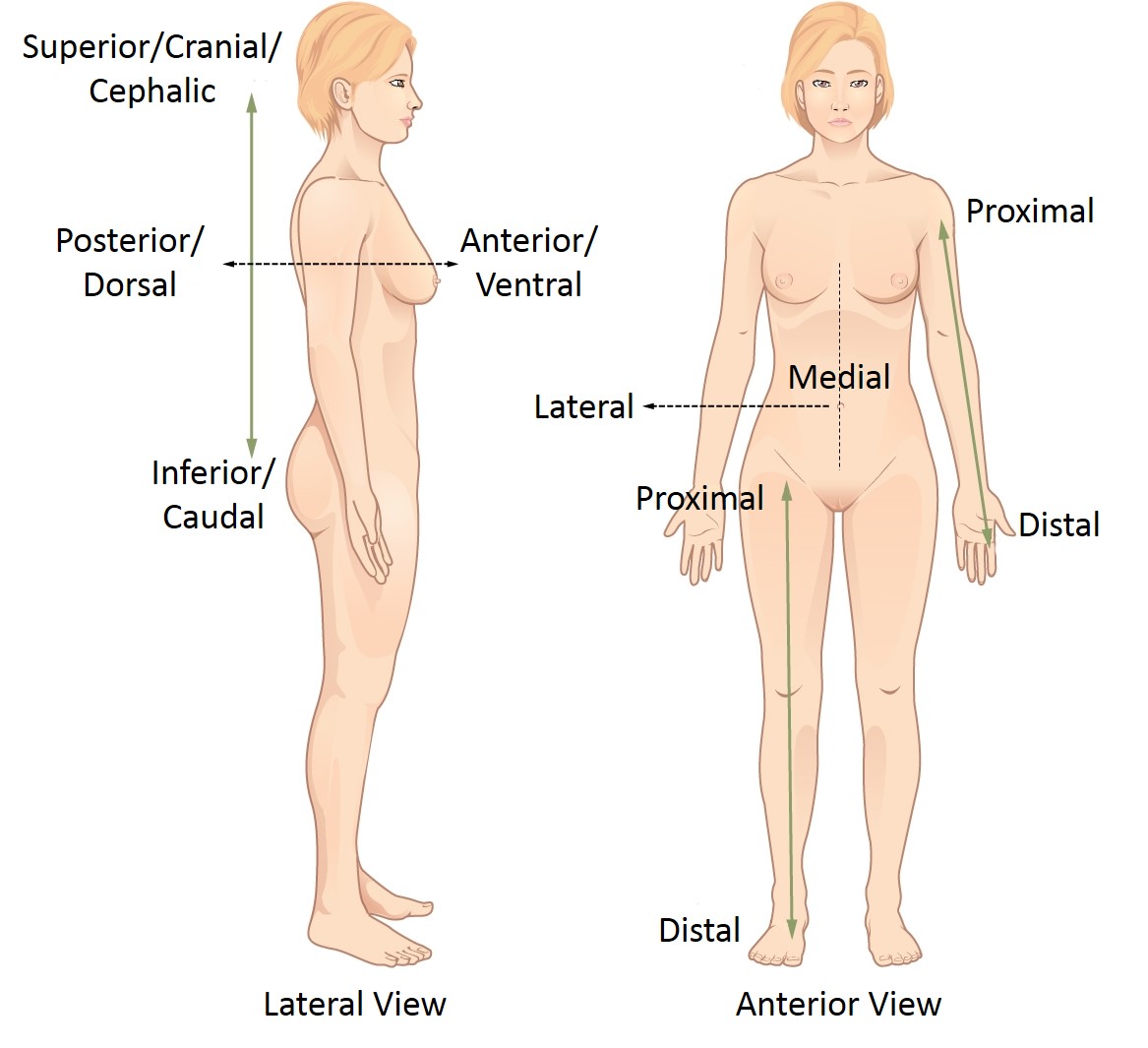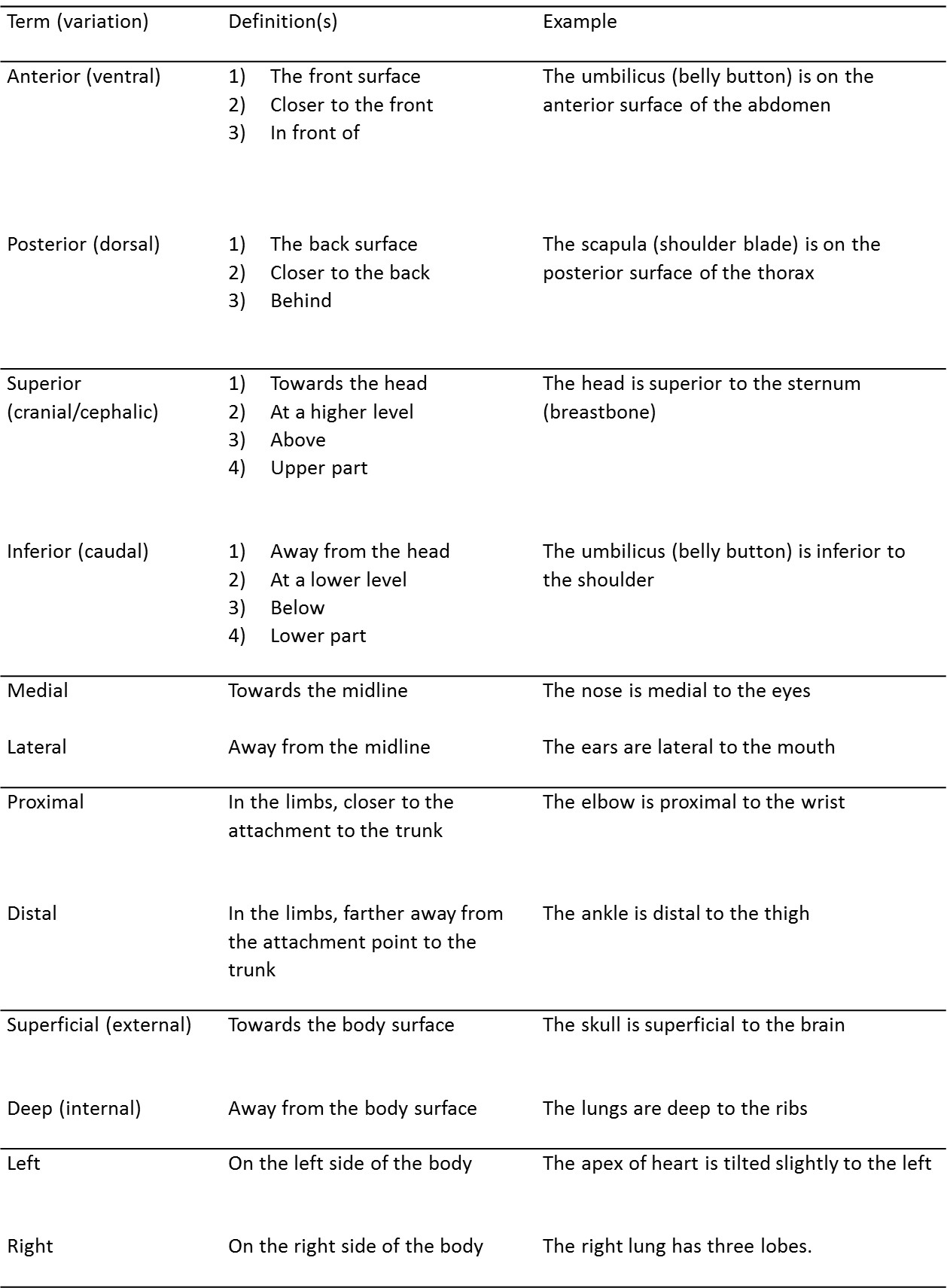Introduction
Directional References
A significant aspect of studying anatomy is understanding the relative positions of structural features. For example, discussing the structures of the knee requires you to know some basic information. Are you describing the left knee or the right? Is the surface you are looking at the “front” or “back”? Which way is “up” or which part is “down”? Is that the “inside” surface, or the “outside” surface? Clearly, terms like up, down, front, back, inside and outside leave a lot to be determined, especially when body segments can be moved, and when the body can be in different positions. To combat this imprecision, directional references have emerged as a standardized way to describe the body, and as a way to navigate anatomy.

The main directional references are often paired, and allow one to communicate the precise location of one structure relative to another. the table below highlights the key directional references, their definitions, and contextual examples of their use.
Directional References


